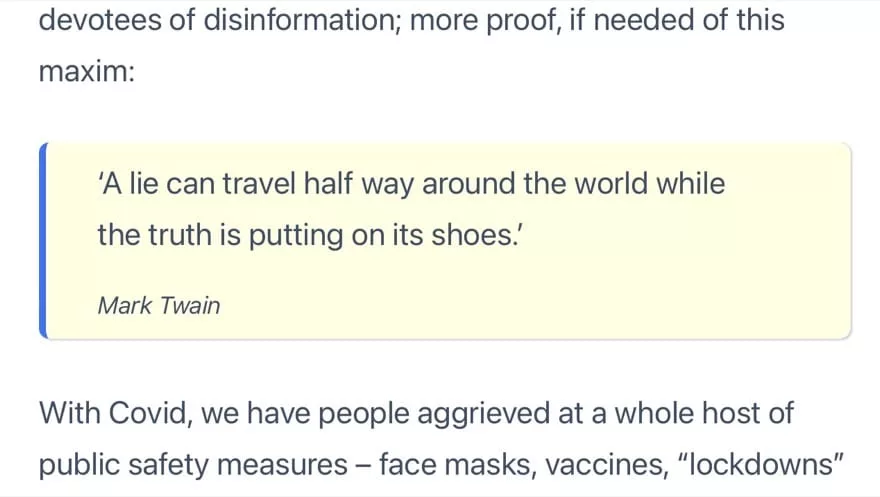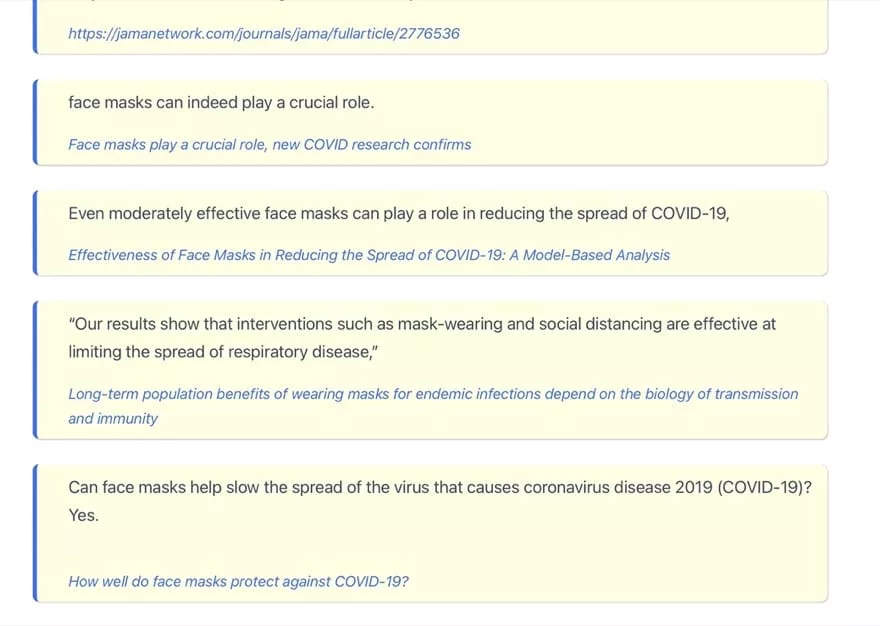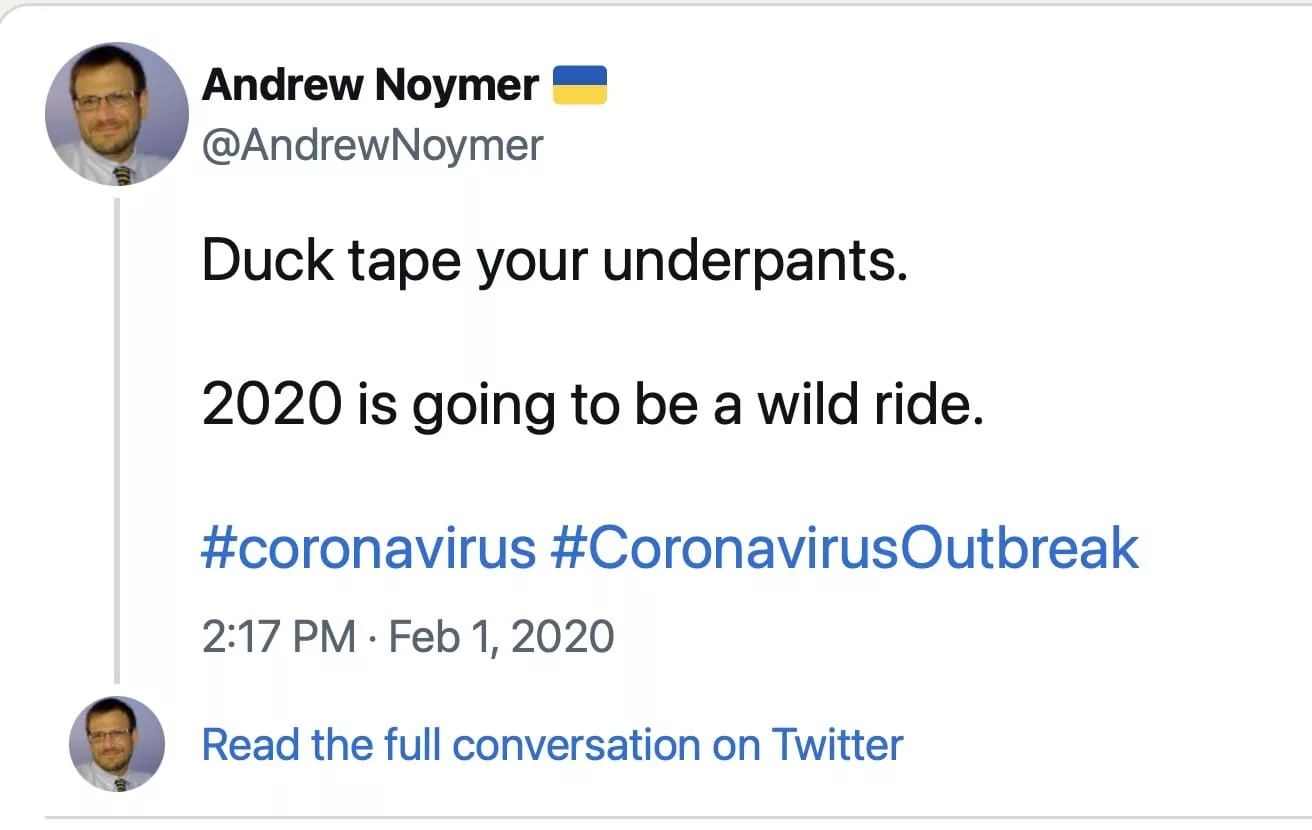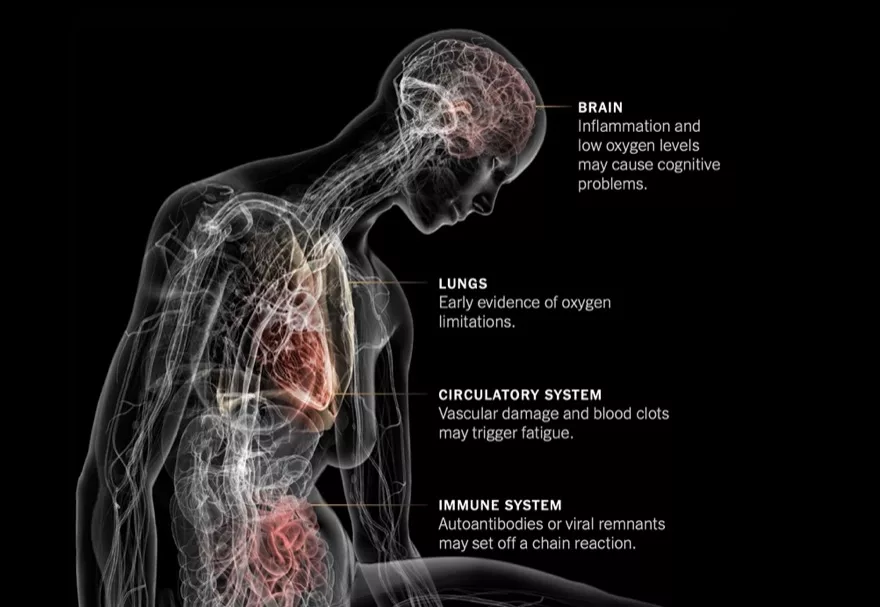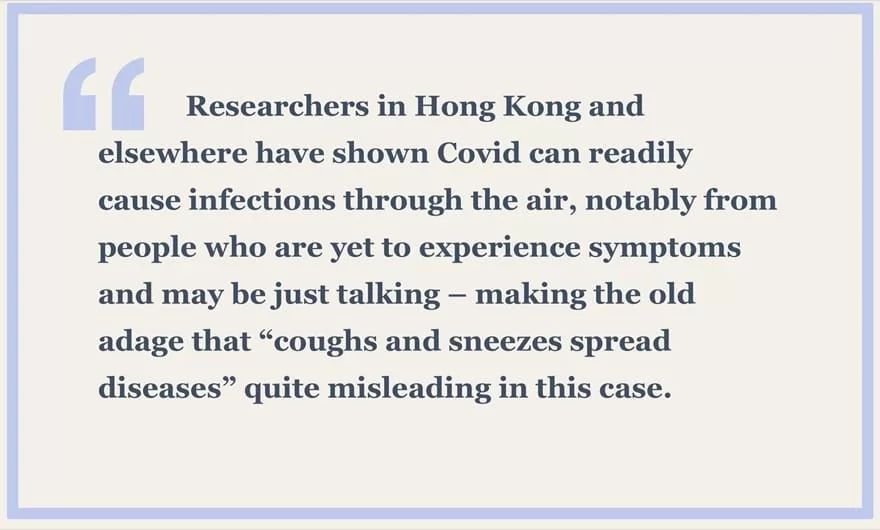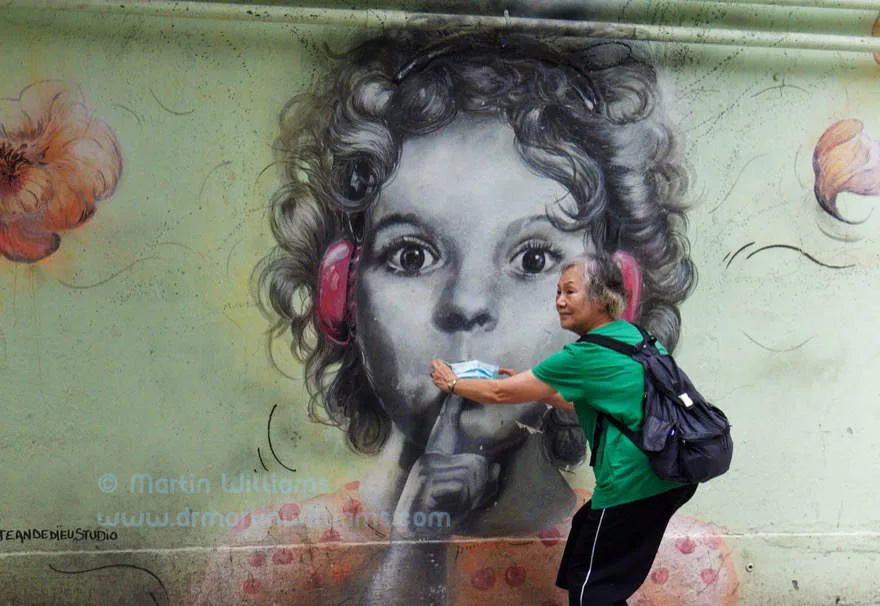Since early in the pandemic, I’ve been seeing scientists arguing Covid is airborne, even with hashtag #covidisairborne – including to counter notions it is spread by droplets [short range], which seem to be based on very old notions.
Important if to combat covid; as it means that should place far greater emphasis on ventilation, and filtering air.
To me, has always seemed a valid concept; yet taken time to reach some official channels, including WHO. But, bit by bit, gaining acceptance; while measures mostly yet to catch up.
Forget notions re distancing indoors
Review of studies in British Medical Journal:
Conclusion This rapid systematic review found evidence suggesting that long distance airborne transmission of SARS-CoV-2 might occur in indoor settings such as restaurants, workplaces, and venues for choirs, and identified factors such as insufficient air replacement that probably contributed to transmission. These results strengthen the need for mitigation measures in indoor settings, particularly the use of adequate ventilation.
Long distance airborne transmission of SARS-CoV-2: rapid systematic review
White House advocates ventilation and filtration
On 23 March 2022, Dr. Alondra Nelson, head of the White House Office of Science and Technology Policy and Deputy Assistant to the President, published a post on the White House website: Let’s Clear The Air On COVID. This begins:
The most common way COVID-19 is transmitted from one person to another is through tiny airborne particles of the virus hanging in indoor air for minutes or hours after an infected person has been there. While there are various strategies for avoiding breathing that air – from remote work to masking – we can and should talk more about how to make indoor environments safer by filtering or cleaning air.
In fact, research shows changing the air in a room multiple times an hour with filtered or clean outdoor air – using a window fan, by using MERV filters in an Heating, Ventilation, and Air Conditioning (HVAC) system, using portable air cleaning devices, and even just opening a window – can reduce the risk of COVID-19 transmission – with studies showing five air changes an hour reduce transmission risk by 50 percent. 1,2 And, improving indoor air has benefits beyond COVID-19: it will reduce the risk of getting the flu, a common cold, or other diseases spread by air, and lead to better overall health outcomes.
Dr. Alondra Nelson
Efforts to clean Covid etc from air vary greatly
Nature has a lengthy, informative look at efforts to clean indoor air – or lack of them:
Specialists in indoor air quality are buoyed by the prospect that the pandemic could bring lasting improvements to the air we breathe indoors. The SARS-CoV-2 virus that causes COVID-19 is spread mainly in indoor spaces, as are the pathogens that lead to other infectious diseases, such as chicken pox, measles, tuberculosis and seasonal influenza.
“There’s never been, in history, so much action about indoor air quality,” says Lidia Morawska, an aerosol scientist at the Queensland University of Technology in Brisbane, Australia.
But huge challenges lie ahead, particularly for the existing stock of schools, office buildings and other public venues.
Indoor air is full of flu and COVID viruses. Will countries clean it up?
DIY air filters
While air cleaning devices can be expensive, it turns out that the main need is for simple filtration; ionizing can perhaps reduce air quality. [UV could kill pathogens like covid, but needs to be in places that are out of sight, so more specialised.]
DIY box fan air filters – Corsi-Rosenthal box has information, including instructions for making filters.

Better face masks, too – KF94 or N95
It also seems the regular surgical masks aren’t so effective; partly my impression here in Hong Kong where masking is widespread but the more infectious omicron spread very fast. Masks had about stopped flu in its tracked, effective vs original covid and delta, but omicron surged.
KF94s [can be more comfortable] and N95s better; and I’ve seen professors saying they can be reused maybe three to five times, so not too pricey. Shown to be better, as in this study:
Surgical masks were less effective in filtering viral particles from coughing patients with SARS-CoV-2 infection. N95 masks and its equivalents [KF94] efficiently blocked SARS-CoV-2 particles from coughing patients.
Effectiveness of surgical, KF94, and N95 respirator masks in blocking SARS-CoV-2: a controlled comparison in 7 patients
Also, a study from Korea reported high mask efficacy, mentions KF80 and KF94 masks [inc testing these to show they can indeed stop high amounts of airborne virus]:
Mandatory wearing of masks and practicing social distancing with masks during peak hours reduced infection rates by 93.5 and 98.1%, respectively.
Safe traveling in public transport amid COVID-19

